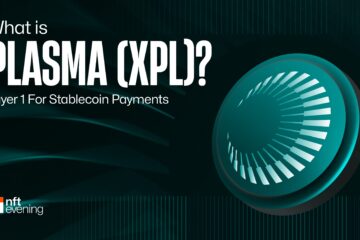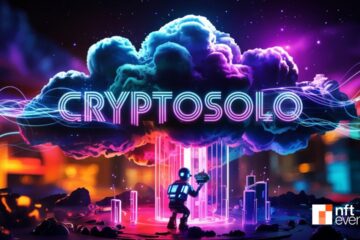The NFT market is constantly transforming: initially, its objects were simple digital images; today, investors demonstrate the greatest interest in complex digital objects with their unique behavior, interactivity, and personalization capabilities. That is, instead of tokenized JPEG files, today’s NFTs have features that can change over time, for example, under specific user actions or external conditions. And this is where artificial intelligence comes into play.
By the way, if you are interested in implementing a solution at the intersection of AI and NFTs, consider Nexchain, whose crypto presale of NEX tokens has already begun.
The Role of AI in the Creation of Interactive, Evolving NFTs
AI is the technology that underlies the new generation of NFTs. First, artificial intelligence (i.e., generative models such as GAN, Diffusion, and LLM) can independently generate objects, be it audio, video, images, or text.
Secondly, AI is capable of learning, which means that objects created with its help can adapt over time to the user’s preferences/behavior, or context of use.
And, of course, we shouldn’t forget about interactivity, since AI integrated into NFTs can make them “alive” and interact with the user through verbal and non-verbal contact.
All these opportunities provided by artificial intelligence take NFTs beyond trivial collectibles, forming “living” digital organisms from them.
Why Can Nexchain Become the Basis for AI-Based NFTs?
The Nexchain platform with NEX tokens provides its users with a lot of next-gen NFT utilities for creating, training, and launching AI-powered NFTs. This is ensured by the presence of AI modules in the blockchain, which, together with their intellectual capabilities, provide enhanced security and privacy.
Also, creators of NFT with artificial intelligence can take advantage of dynamic smart contracts with the help of Nexchain, which offers the ability to change the behavior of NFTs either according to previously defined rules or through machine learning.
Finally, there is an API and SDK for developers, which means that they will not have to waste time on complex integrations of neural network models, implementation of data management methods, and introduction of YAN in metaverses and game engines.
If we add unlimited scalability to the above advantages (the Nexchain blockchain is capable of processing thousands of interactions per second), it becomes clear that this platform can become a reliable foundation for creating a full-fledged ecosystem of smart and self-learning NFTs.
Examples: AI Characters, Trainable NFTs, and Gamified Collections
Now, let’s look at specific examples of the joint implementation of AI and NFT concepts.
- AI characters. Essentially, these are NFT characters equipped with neural network logic based on LLM or multimodal models. They are capable of conducting dialogues, changing their behavior based on the context, and even remembering and learning from interactions. Their standard “habitat” is metaverses and RPG games. However, they can also have the format of digital assistants, virtual partners, or even avatars of their owners.
- Learnable NFTs. This type of non-fungible token progresses over time, adapting its behavior, appearance, and/or functionality. The trigger for these changes can be previous use cases or decisions made. The most trivial example of such an NFT is a kind of next-gen Tamagotchi that interacts with its owners and adapts to their behavior.
- Gamified collections. AI also allows digital artists to create entire collections of intelligent NFTs instead of static ones. Their owners can upgrade each element of their collection, open new levels, and receive rewards for participation. All these features of evolving digital collectibles stimulate user engagement and increase their value on the secondary market.
How Artists and Collectors Use AI-Enhanced NFT
With AI-NFT tools, creators get the opportunity to both create and produce high-tech art solutions, such as creatives that respond to the emotional state of the viewer (this can be done through a camera and sentiment analysis), generative collections (in such collections, each copy depends on the current data/history of the owner), personalized NFTs that come to life when interacted with.
All this makes the modern NFT market more diverse and attracts new audiences of potential investors.
Conclusion
AI NFTs 2025 is not just a technological trend, but an innovative approach to their creation. Thus, AI-based NFTs allow them to become smart and sensitive to the emotions of their users. AI also expands the possibilities for artists, since now, the idea and creativity are more important that the ability to create real art by hand. If you are interested in building dynamic NFT platforms for NFTs, consider Nexchain NFT tools – they might be the perfect base for it. As for investors, be sure to check out the crypto presale of NEX tokens – it has already started!
 Bitcoin
Bitcoin  Ethereum
Ethereum  Tether
Tether  XRP
XRP  USDC
USDC  TRON
TRON  Lido Staked Ether
Lido Staked Ether  Dogecoin
Dogecoin  Figure Heloc
Figure Heloc  Cardano
Cardano  WhiteBIT Coin
WhiteBIT Coin  Bitcoin Cash
Bitcoin Cash  Wrapped stETH
Wrapped stETH  Wrapped Bitcoin
Wrapped Bitcoin  USDS
USDS  Wrapped eETH
Wrapped eETH  Binance Bridged USDT (BNB Smart Chain)
Binance Bridged USDT (BNB Smart Chain)  Chainlink
Chainlink  Monero
Monero  LEO Token
LEO Token  WETH
WETH  Zcash
Zcash  Stellar
Stellar  Coinbase Wrapped BTC
Coinbase Wrapped BTC  Ethena USDe
Ethena USDe  Hyperliquid
Hyperliquid  Litecoin
Litecoin  Sui
Sui  Avalanche
Avalanche  Hedera
Hedera  sUSDS
sUSDS  Shiba Inu
Shiba Inu  USDT0
USDT0  Dai
Dai  Canton
Canton  Uniswap
Uniswap  PayPal USD
PayPal USD  Mantle
Mantle  Cronos
Cronos  World Liberty Financial
World Liberty Financial  Toncoin
Toncoin  Ethena Staked USDe
Ethena Staked USDe  Polkadot
Polkadot  USD1
USD1  Aave
Aave  Rain
Rain  Bitget Token
Bitget Token  MemeCore
MemeCore 


